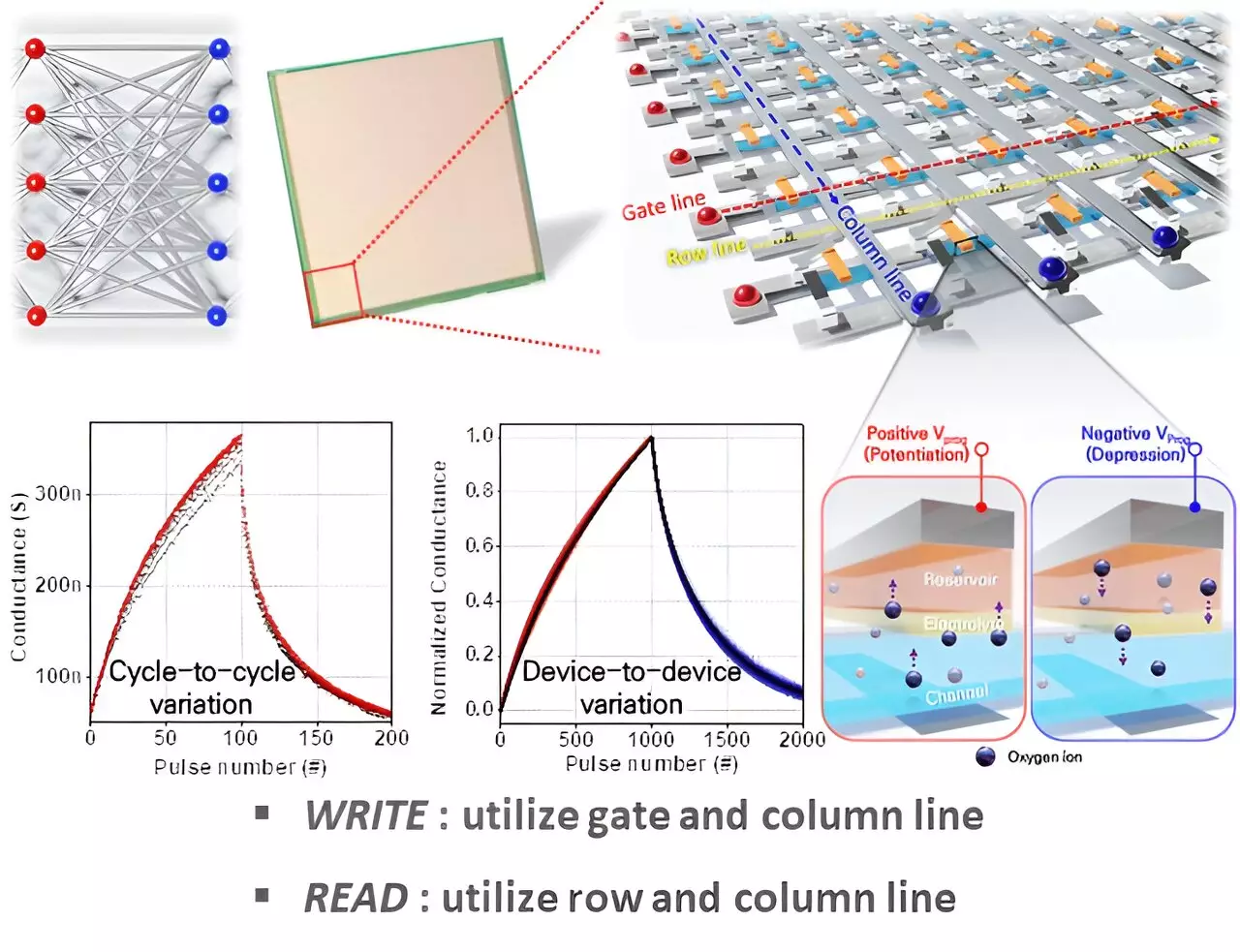In a recent study published in Science Advances, a research team has showcased the potential of analog hardware using Electrochemical Random Access Memory (ECRAM) devices in maximizing the computational performance of artificial intelligence (AI). The team, led by Professor Seyoung Kim, has demonstrated the ability of ECRAM devices to address the limitations of traditional semiconductor memory and enhance the accuracy of AI neural network training computations.
The rapid advancement of AI technology has necessitated the exploration of alternative hardware solutions to traditional digital processors such as CPUs, GPUs, and ASICs. Analog hardware, which adjusts semiconductor resistance based on external voltage or current, offers a promising approach for AI computation. By utilizing a cross-point array structure with vertically crossed memory devices, analog hardware enables parallel processing of AI tasks and continuous data processing.
While analog hardware presents advantages over digital processors for specific computational tasks, meeting the diverse requirements of computational learning and inference remains a challenge. The research team focused on ECRAM devices, which manage electrical conductivity through ion movement and concentration. Unlike traditional semiconductor memory, ECRAM devices feature a three-terminal structure with separate paths for reading and writing data, allowing for operation at lower power levels.
The team successfully fabricated ECRAM devices in a 64×64 array using three-terminal-based semiconductors. Experimental results demonstrated excellent electrical and switching characteristics, high yield, and uniformity across devices. By applying the Tiki-Taka algorithm, an advanced analog-based learning algorithm, the team maximized the accuracy of AI neural network training computations using the ECRAM devices.
The research team’s findings highlight the potential for commercializing ECRAM technology in AI applications. By demonstrating the impact of the “weight retention” property of hardware training on learning and confirming that their technique does not overload artificial neural networks, the researchers have set a precedent for the scalability of ECRAM devices. The team’s successful implementation of ECRAM devices in a 64×64 array represents a significant advancement in analog hardware for AI computation.
The research team’s work on ECRAM devices has opened up new possibilities for maximizing the computational performance of artificial intelligence. By addressing the limitations of traditional semiconductor memory and showcasing the scalability and accuracy of ECRAM devices, the team has laid the groundwork for the commercialization of this innovative technology in the field of AI.


Leave a Reply